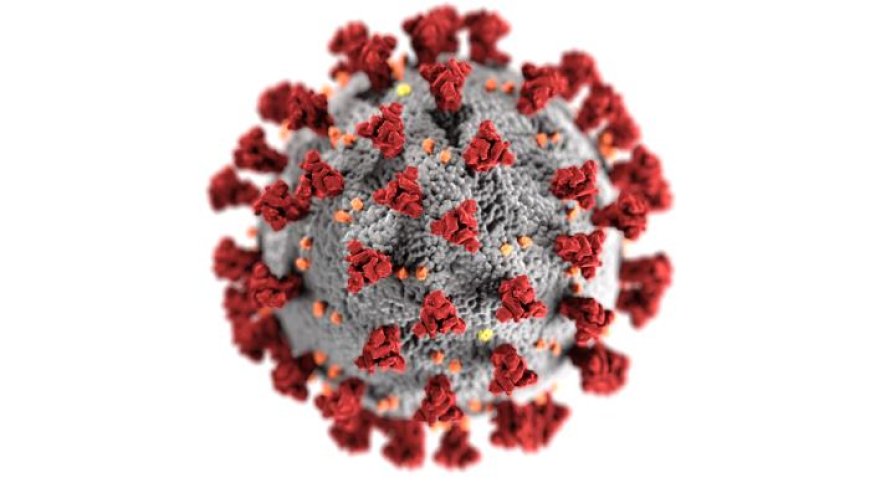Human Metapneumovirus (HMPV) Outbreak in China
Explore the risk factors and implications of Human Metapneumovirus (HMPV). Learn about its symptoms, vulnerable populations, complications, and preventive measures

A new virus, Human Metapneumovirus (HMPV) is currently making headlines due to an outbreak in China, particularly affecting the northern provinces and raising significant health concerns. This respiratory virus, though not new, has emerged as a major public health issue due to its rapid spread, particularly among children and immunocompromised individuals. Here’s a comprehensive look at the HMPV outbreak, its implications, and how it’s being managed.
What is HMPV?
Human Metapneumovirus (HMPV) is a single-stranded RNA virus belonging to the Paramyxoviridae family. Discovered in 2001, it is closely related to the respiratory syncytial virus (RSV) and primarily affects the respiratory system.
Symptoms of HMPV Infection
HMPV symptoms range from mild to severe and can mimic those of the common cold or flu:
-
Mild Symptoms:
-
Cough
-
Fever
-
Nasal congestion
-
Sore throat
-
-
Severe Symptoms (in vulnerable populations):
-
Wheezing
-
Shortness of breath
-
Bronchiolitis
-
Pneumonia
-
Acute respiratory distress
-
Young children, older adults, and those with weakened immune systems are most susceptible to severe complications
The Current Outbreak in China
The outbreak is predominantly affecting children under 14, with pediatric hospitals in northern China reporting an overwhelming surge in cases. Healthcare systems in cities like Beijing and Tianjin are under strain as they grapple with the rising number of hospitalizations.
Possible Causes
-
Seasonal Spike:
-
HMPV outbreaks are common in late winter and spring, coinciding with the current season.
-
-
Post-Pandemic Immunity Gap:
-
Prolonged COVID-19 precautions may have reduced population immunity to other respiratory viruses like HMPV.
-
-
Environmental Factors:
-
Cold temperatures and high pollution levels may exacerbate the spread of respiratory viruses.
-
How Does HMPV Spread?
HMPV is highly contagious and spreads via:
-
Respiratory Droplets: Through coughing and sneezing.
-
Contact with Contaminated Surfaces: The virus can survive on surfaces, making hand hygiene critical.
-
Direct Contact: Such as kissing or sharing utensils with an infected person.
-
No Specific Treatment
-
Currently, there is no antiviral medication or vaccine for HMPV. Treatment focuses on relieving symptoms with supportive care, such as oxygen therapy and fluids.
-
-
Overwhelmed Healthcare Systems
-
Hospitals in outbreak regions are experiencing shortages of pediatric beds, medical staff, and essential supplies.
-
-
Delayed Detection
-
Symptoms of HMPV overlap with other respiratory illnesses, leading to delays in diagnosis and treatment.
-
Preventive Measures
Individual Precautions
-
Regular handwashing with soap and water.
-
Avoiding touching the face with unwashed hands.
-
Staying away from infected individuals.
-
Wearing masks in crowded places.
Community and Governmental Efforts
-
Enhanced Surveillance:
-
Monitoring and reporting systems for respiratory illnesses have been intensified.
-
-
Public Awareness Campaigns:
-
Educating communities about HMPV prevention and symptoms.
-
-
Healthcare Capacity Building:
-
Allocating additional resources to hospitals and clinics in affected areas.
-
The HMPV outbreak in China has drawn international attention as health experts fear potential global spread due to increased travel and interconnectedness. While the World Health Organization (WHO) has not declared an emergency, it has urged nations to enhance surveillance and preparedness.
The HMPV outbreak underscores the importance of continued vigilance and investment in public health infrastructure. As China and the global health community work to contain the spread, adhering to preventive measures and improving healthcare readiness will be key in mitigating the impact of this respiratory virus. The current situation serves as a stark reminder of the ongoing challenges posed by emerging and re-emerging infectious diseases.



 Utej
Utej 





